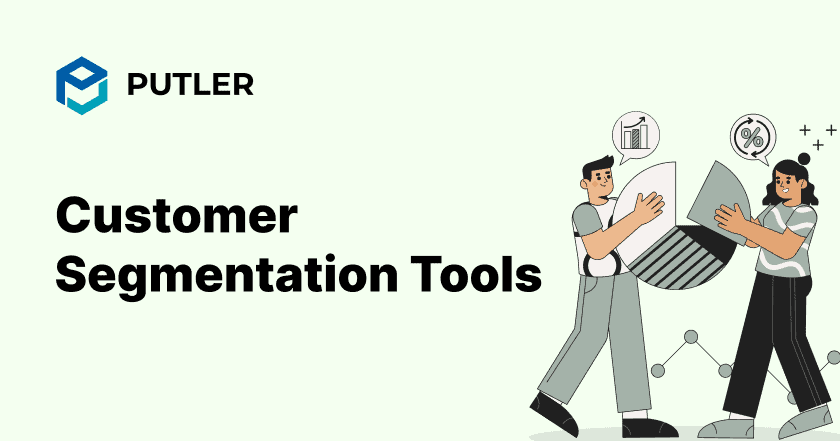Customers are the backbone of any business.
So, understanding their needs and preferences is crucial for effective marketing campaigns.
And this understanding begins by effectively segmenting customers.
Today, you can find tons of customer segmentation tools in the market.
These tools can help you identify target customers and predict their preferences, facilitating hyper-personalized campaigns.
But how to find the best one among all these available options?
Stay tuned as we have dug deeper into customer retention software, offering insights into the best tools to boost your revenue in 2024.
But first, let’s clear up the basics.
What is a Customer Segmentation tool?
Customer segmentation software is a platform that helps you to analyze and divide your customer base into various segments based on different characteristics, such as demographics, behavior, preferences, etc.
It helps you to automate the whole segmentation process in a few seconds.
To get a better hold of it, let’s first go through some customer segmentation examples.
- First, the segmentation tool pulls data from multiple sources, including customer interaction, transactions, website visits, social media engagements, etc.
- After that, the data is processed and analyzed. The tools identify patterns, trends, and similarities to determine characteristics.
- Then based on the analysis, customers are divided into various groups. Each customer is assigned to the most appropriate segment.
- Once the above steps are executed, the tools will provide visualization that helps to understand and interpret data better.
What are the benefits of customer segmentation tools?
Customer segmentation tools offer numerous benefits to businesses across various industries.
Let’s discuss these advantages one by one.
Tailored marketing efforts
To create a personalized marketing strategy, you need to understand your customers.
But you can’t understand each one of them when you operate on a large scale.
With a segmentation tool, you can create various segments and divide your customers into various smaller groups to understand customer profiles better.
You can further use this information to tailor your messaging offers and even promotions for each segment, satisfying specific needs & preferences.
Improved customer experiences
The primary goal of every business is to satisfy the customers.
With a better understanding of customer segmentations, you can create personalized marketing strategies that resonate with your customers’ unique needs.
This will help you create a satisfying and engaging customer experience. Your customers would feel like the brand values them and understands them deeply.
An improved customer experience also increases customer loyalty, compelling them to recommend your brand to others.
And this results in increased revenue in the long run.
Better product development
Customer segmentation software also provide valuable insights into your customer’s preferences, pain points, and buying behavior.
It helps you to develop or customize your product or services around the specific needs of the customers.
And create a product that meets the needs and expectations of that target audience better.
Efficient use of resources
By understanding your customer segments, you can locate your business resources more efficiently.
For example, segmentation tools can help you identify the segment that contributes the most to your revenue or has the highest growth potential. You can focus on the segments to increase your revenue.
You can even locate your resources to meet the needs and preferences of different customer segments.
For example, you can use the resources to develop or market the product that is most relevant or valuable to a targeted audience.
Increased sales and revenue
Using customer segmentation tools you can create a marketing campaign that speaks directly to your customers.
You can even increase the effectiveness of your marketing efforts and drive more sales.
Customer segmentation tool can also help you to identify new marketing opportunities.
By using the data, you can improve your product development, just like we have mentioned above.
And open a whole new opportunity for your business to increase its revenue streams.
These were some important benefits of using customer segmentation software.
Now let’s jump straight to the best customer segmentation tools in 2024.
Best customer segmentation tools in 2024
Finding the best customer segmentation tool can be challenging.
You can find several tools available in the market. But, it’s not possible to try each one of them to find out which one serves your purpose the best.
Let us help you.
Here we have curated a list of some best players in the market to make your search a bit narrow.
Heap
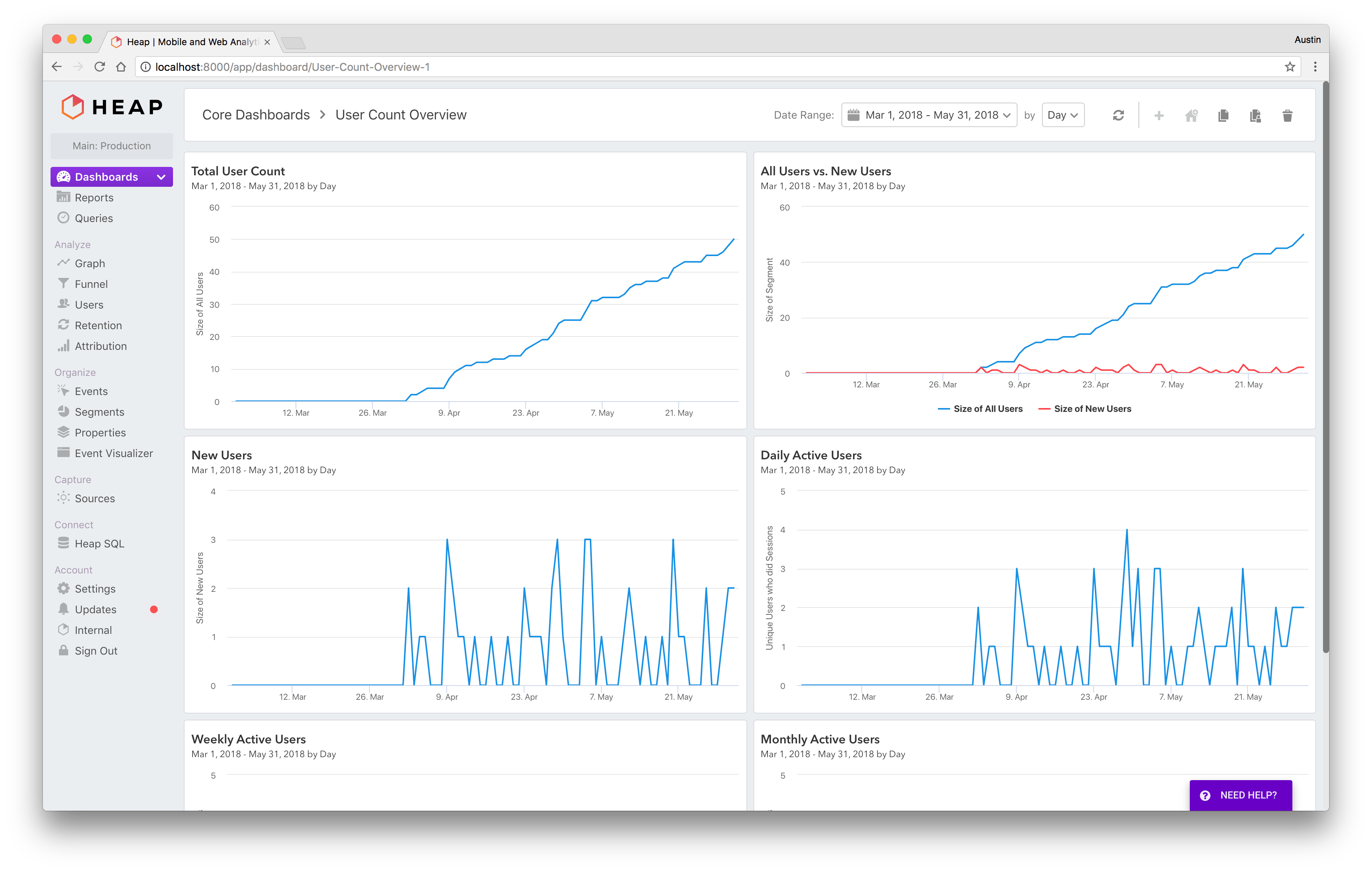
Heap is a powerful analytics tool that lets you know whatever your customer is doing with your product.
It offers various features designed to empower businesses to understand and target their users better.
Pros of Heap
- Captures and analyzes user interaction on your website or app.
- Track past and present activities, behavior, and events of the user.
- User-friendly interface and comes with easy navigation.
- Visualize and track users’ behaviors through specific pathways to optimize conversion funnels better.
- Tracks every single user action automatically and generates a comprehensive and interactive report.
Cons of Heap
- Heap comes with multiple features that take time to master them.
- Another con of Heap is that it has limited customizability.
Heap Pricing
Heap offers different pricing plans for their customers:
-
– Free
– Growth
– Pro
– Premier
To know the price of each plan, you will have to contact their sales team.
Putler
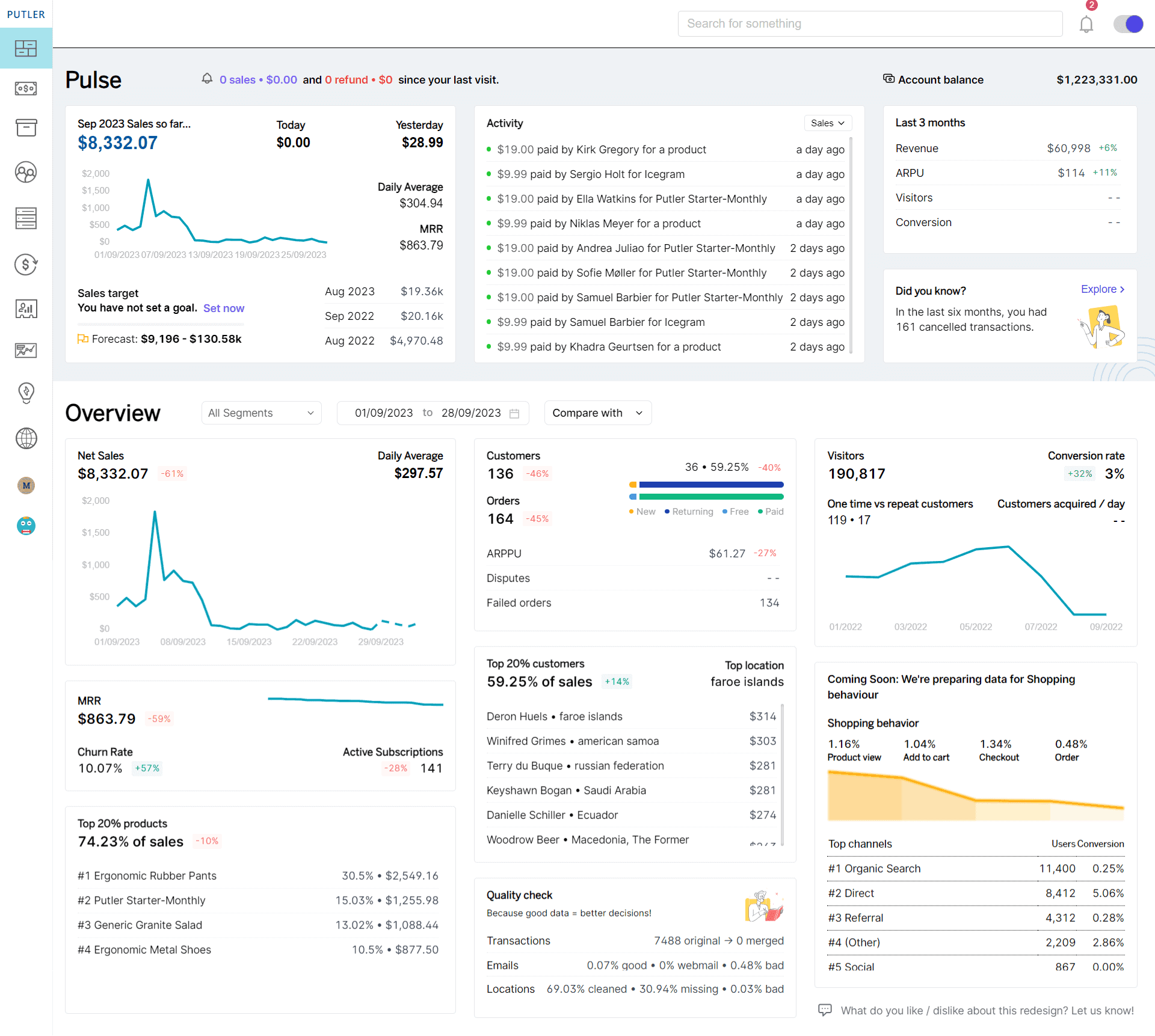
Putler is a powerful analytics tool for e-commerce and SaaS businesses.
It allows you to track, monitor, and generate detailed reports on your sales, transactions, and customer data.
Moreover, Putler seamlessly integrates with multiple platforms including e-commerce platforms, payment gateways, third-party integrations, etc.
Pros of Putler
- Provides comprehensive RFM segmentation allowing businesses to segment customers based on factors like decency, frequency, and monetary values.
- Sales heat map features that visually present sales data.
- Detailed customers and product profiles enable deep insights into individual customer preferences & product performance.
- Identify frequently bought items and facilitate strategies like upselling or cross-selling to increase sales.
- 200+ KPIs to provide comprehensive insights into business performance.
- Actionable insights into your customers’ behavior, trends, and preferences so that you can make informed decisions.
Cons of Putler
- The subscription analytics features don’t go into much detail.
Putler Pricing
Putler offers three different plans for you. But one thing it promises is that with each plan, you will get an outstanding reporting solution.
-
– Starter: $20 per month
– Growth: $50 per month onwards
– Custom: You can get a tailored plan to accommodate all your needs
Icegram
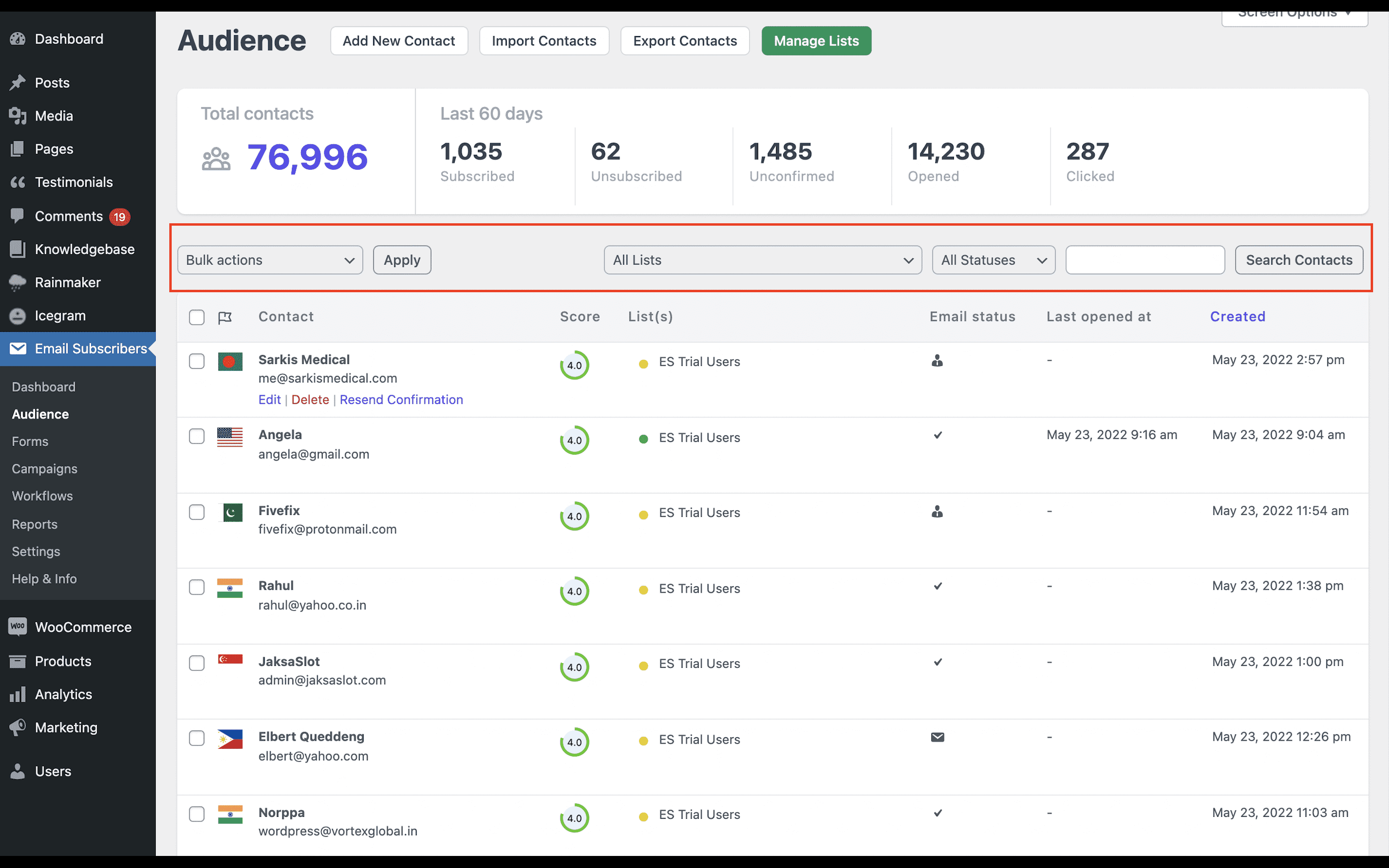
Icegram Engage is a versatile marketing automation platform.
It is specifically designed to help businesses engage with their website visitors, capture leads, and drive conversions through targeted messaging.
Pros of Icegram
- Extensive targeting options to segment your website visitors based on various factors like behavior, demographics, location, etc.
- Supports various messaging formats, including pop-ups, slide-ins, notification bars, and so on.
- Customized messaging templates as per your brand voice.
- Easy integration with popular email marketing platforms, CRM, and third-party tools.
Cons of Icegram
- Icegram Engage offers limited analytics capabilities as compared to other dedicated web analytics tools.
Icegram Engage Pricing
Icegram Engage has three different pricing plans for you:
-
– Starter: Free
– Pro: $129 per year
– Max: $229 per year
Kissmetrics
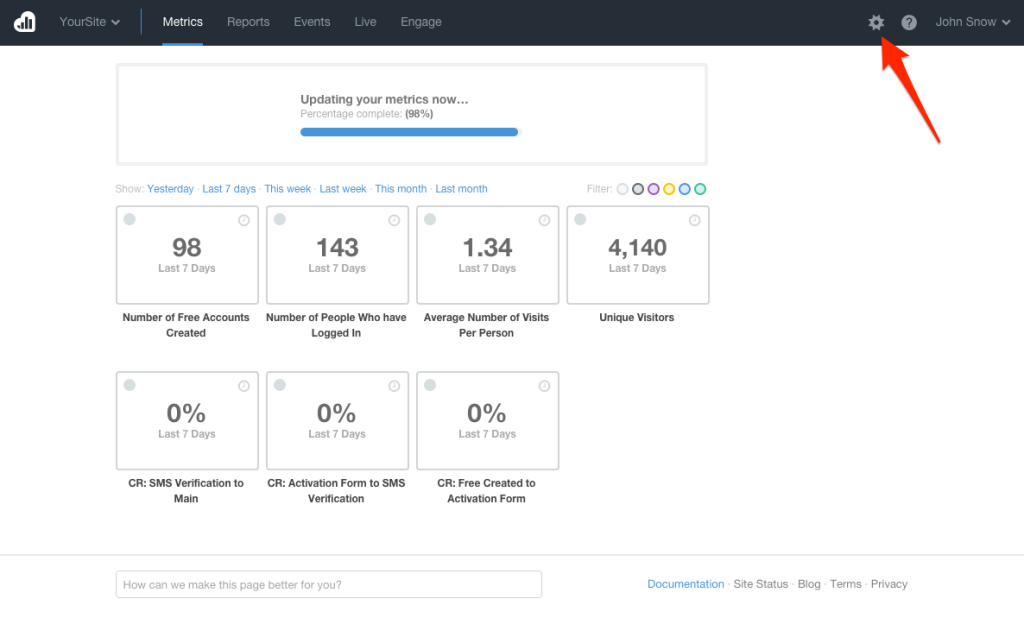
Kissmetrics is another analytical platform that helps businesses to understand their customers better.
Pros of Kissmetrics
- In-depth analysis to track individual user behavior based on their activity on a website or app.
- Visualize the whole journey of a customer to optimize each stage for better results.
- Easy segmentation of your audience into various categories to enable targeted marketing campaigns.
- Enable A/B testing with Kissmetrics to experiment with different variations.
- Easy integration with other tools like CRM, email marketing services, etc.
Cons of Kissmetrics
- Some features of Kissmetrics may require a learning curve for users. Businesses have to spend time and effort to reach their employees to use this product effectively.
- Kissmetrics can be relatively expensive. Especially for new and small businesses with tight budgets.
Kissmetrics Pricing
Kissmetrics offers three different plans for its customers:
-
– Silver: $199 per month
– Gold: $499 per month
– Platinum: Custom (businesses can get their custom quote)
Mixpanel
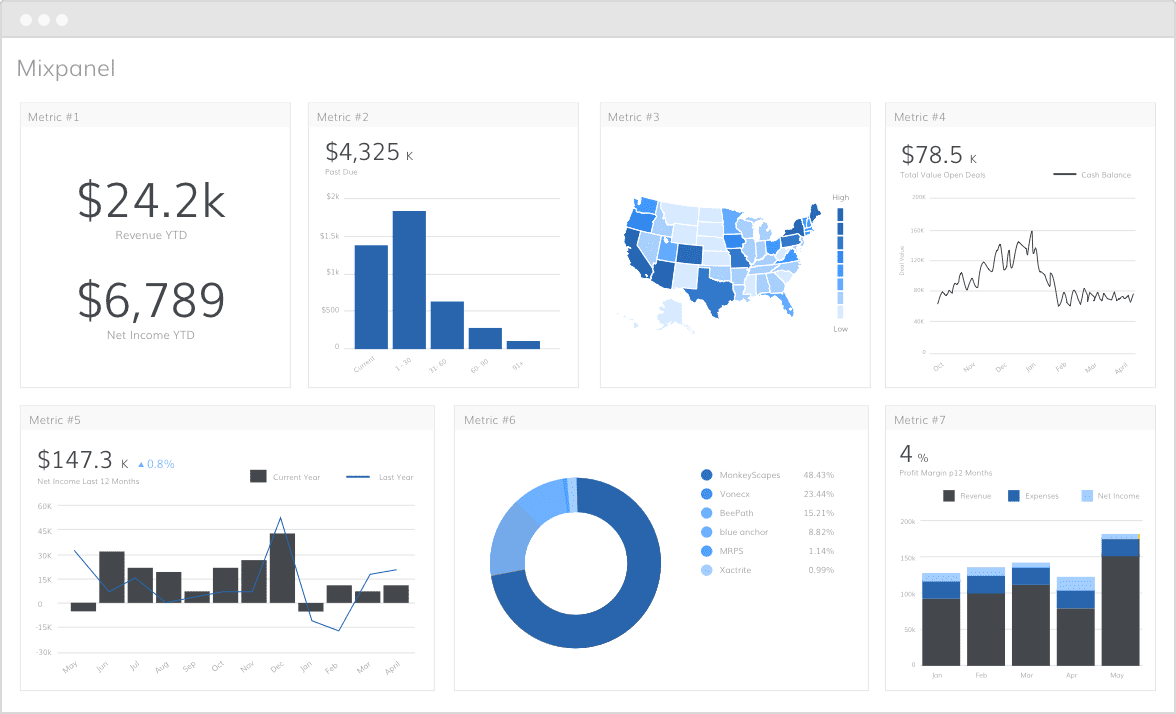
Mixpanel is a robust analytics tool that is tailored specifically for your business.
It helps you to understand your user behavior and optimize your product or service accordingly.
Pros of Mixpanel
- Allows segmentation of your audience based on various criteria.
- Real-time data analysis.
- Minute-by-minute insights based on user interaction and behavior.
- Track and analyze user journeys through conversion funnels.
- Analyze custom events to gain deeper insights into user interaction and behavior.
Cons of Mixpanel
- Mixpanel can be a little difficult for complete beginners.
- Businesses may have to spend time and resources teaching their employees to get maximum output.
- It can also be a little expensive, especially for large businesses with a large user base.
Mixpanel Pricing
Mixpanel offers three different plans for everyone:
-
– Free: $0
– Growth: $20 per month
– Enterprise: custom quote
Now you know the best performers in the market. But, which one to choose among all of these?
How to choose the best customer segmentation tool?
To choose the best software for yourself, you have to be clear with a few things. Let’s discuss them in detail.
- Define your objectives
To choose the best customer segmentation tool for yourself you need to be clear with your marketing goals.
You should try to assess how the product will help you to meet your business goals.
You must also consider if it will help you to meet your current goals only or will also fulfill your future needs.
- Ease of use
Another important thing that you need to consider while purchasing any customer segmentation tool is its ease of use.
Buying any complex or bulky software can be a headache for any enterprise as they will have to use their resources to teach their employees.
Sometimes you may even have higher professionals who know how to work with such complex solutions.
- Scalability
Good software is simple but also robust enough to scale with your company. As a company grows, software should also grow with it.
It should offer several plans that you can upgrade to satisfy the needs of your growing company.
- Cost and ROI
Another way to choose the best segmentation for your business is by comparing the cost and ROI it will provide to your business.
Evaluate its pricing models and compare it with the potential ROI that the tool based on the anticipated benefits or improvements in your business outcomes.
- Integration capabilities
Before committing to any software you need to access its integration capabilities with your existing systems or platform.
Always choose a tool that seamlessly integrates with your existing infrastructure to ensure smooth data flow and collaboration across teams.
- User reviews and recommendations
Always and always check the user reviews testimonials and case studies to understand how effective our product is.
You can always learn from the experience of other businesses that have already used the tool.
Apart from looking at the landing pages of the product and service to understand its features, you should look for the reviews that people have provided.
Conclusion
Customer segmentation tools have multifold benefits. From tailored marketing efforts to improving customer experience, it has got it all.
By using this, businesses can gain deeper insights into their customer base and pave the way for targeted marketing strategies.
By utilizing these data, you can develop a product or service that resonates with your customer. And thereby increasing your revenue.
If you want a one-stop solution to manage and synchronize all your data in one place, you should try out Putler.
Putler is a powerful analytics tool that helps you collect, analyze, and generate reports of different data in one place.
FAQs
Why is customer segmentation important?
Customer segmentation is important for any business as it allows them to divide their customers into various distinct groups based on similar characteristics.
By customer segment analysis, a business can tailor their marketing campaigns, products, and services to meet the specific needs and preferences of each group. It helps to increase customer satisfaction, improve campaign effectiveness, increase conversion rates, and boost revenue.
What is the relationship between customer segmentation and journey mapping?
Customer segmentation and journey mapping are closely related. They complement each other as they help in understanding and engaging with customers.
On one hand, customer segmentation allows you to categorize customers into various groups.
On the other hand, journey mapping involves mapping out various stages of the customer journey.
By combining them, a business can gain a comprehensive understanding of their customers’ needs and behavior.
What are the benefits of customer segmentation?
Customer segmentation has numerous benefits for businesses:
- Tailored marketing campaign
- Improved customer experience
- Better product development
- Efficient resource allocation
- Increased sales and revenue
These were some benefits of customer segmentation tools. But it is not just limited to these. They even vary from one business to another depending on the industry they operate.
